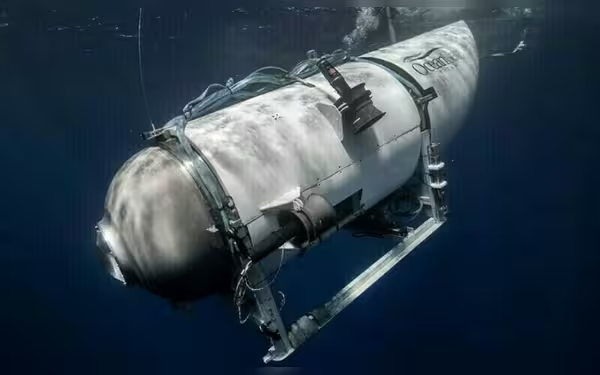Saturday, November 16, 2024 05:55 PM
Titan Submersible Incident Raises Safety Concerns
- Titan aborted dive due to valve malfunction.
- CEO Stockton Rush piloted during the incident.
- Urgent need for improved safety standards.
 Image Credits: dawn.com
Image Credits: dawn.comThe Titan submersible's tragic incident highlights urgent safety concerns in deep-sea exploration following a fatal implosion.
The tragic incident involving the Titan submersible has raised serious concerns about safety protocols in deep-sea exploration. Just days before the fatal implosion that claimed the lives of five individuals, the Titan had to abort a dive due to a significant valve malfunction. This malfunction not only jeopardized the mission but also left at least one passenger in a precarious position, hanging upside down inside the vessel.
During a recent hearing, testimony revealed that the pilot of the Titan on that ill-fated day was none other than Stockton Rush, the CEO of OceanGate. Tragically, Rush lost his life in the implosion that occurred shortly after the aborted dive. According to the testimony, the situation was dire, as the crew faced considerable challenges in correcting the valve issue, which took a significant amount of time to resolve. The pilot's struggle was further compounded when he reportedly “crashed into the rear bulkhead” of the submersible, highlighting the chaotic circumstances surrounding the dive.
This incident serves as a stark reminder of the inherent risks associated with deep-sea exploration. While the allure of exploring the ocean's depths is undeniable, it is crucial that safety measures are prioritized to prevent such tragedies from occurring in the future. The testimony from the hearing underscores the need for rigorous checks and balances in the design and operation of submersibles.
As we reflect on this heartbreaking event, it is essential to advocate for improved safety standards in the industry. The loss of lives in pursuit of exploration should not be in vain. By learning from these incidents, we can work towards ensuring that future expeditions are conducted with the utmost care and precaution, allowing adventurers to explore the mysteries of the deep sea safely.













